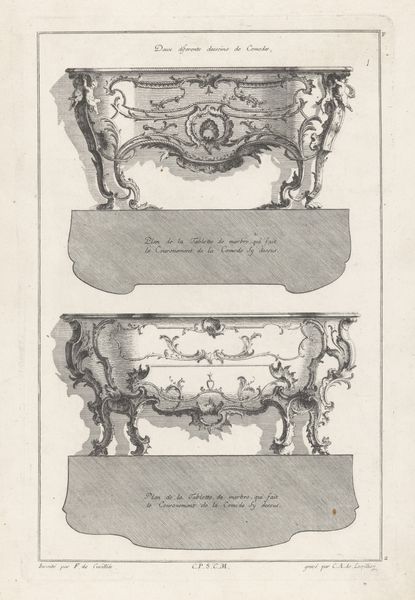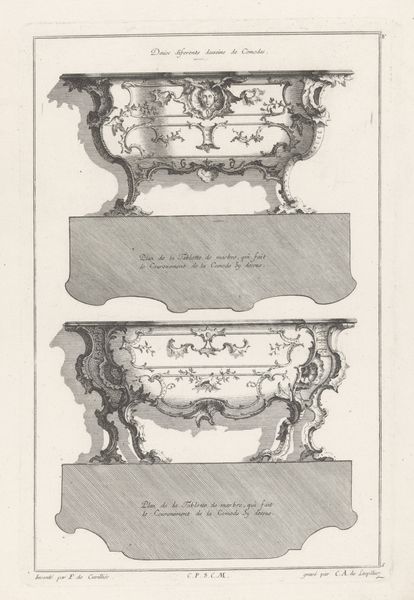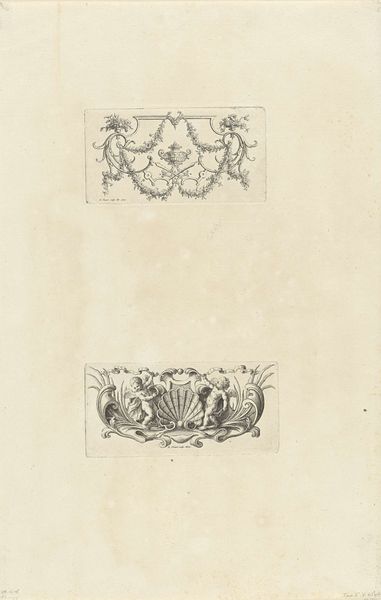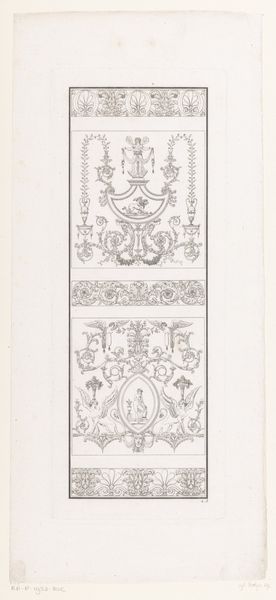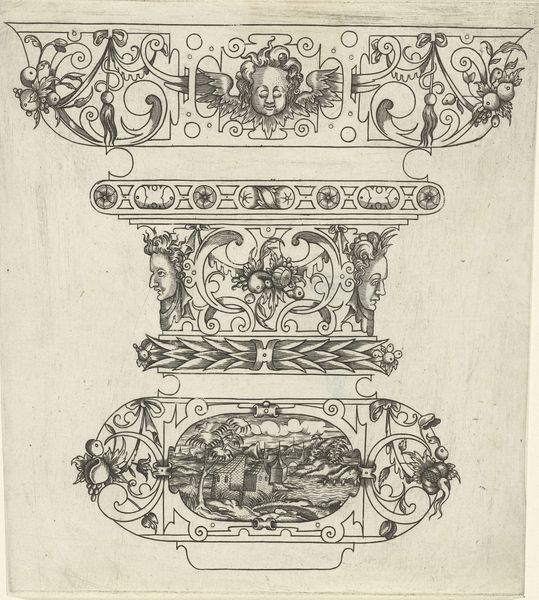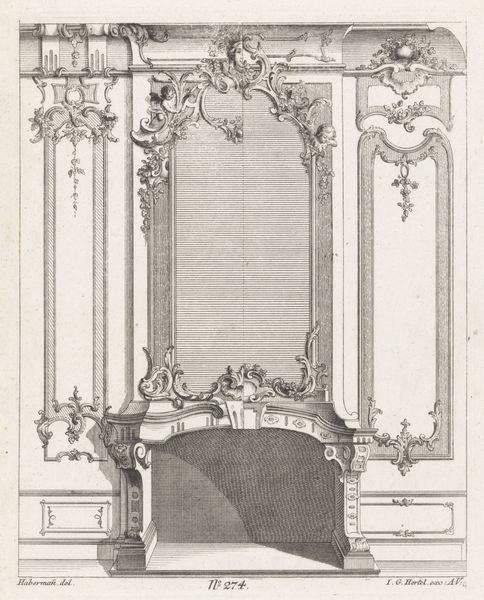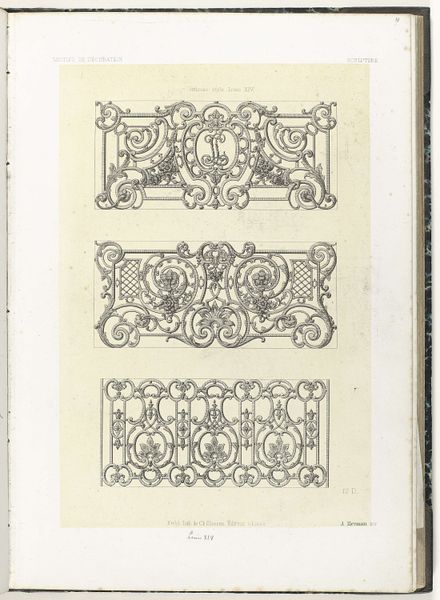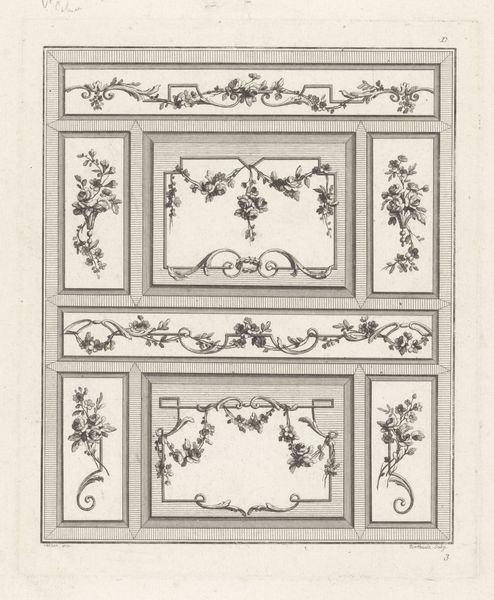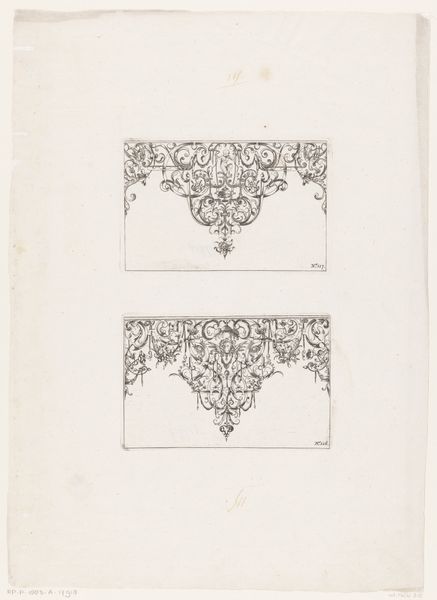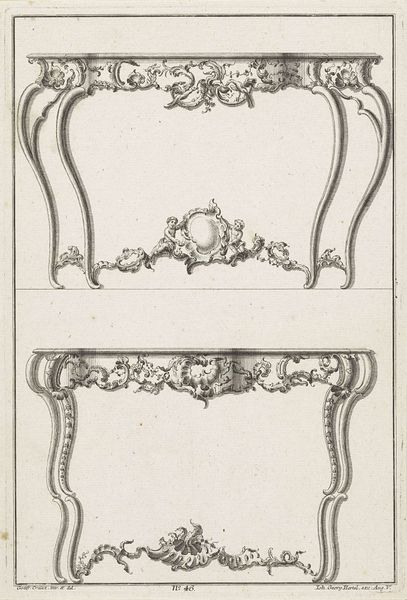
drawing, print, engraving
#
drawing
#
baroque
# print
#
form
#
line
#
decorative-art
#
engraving
Dimensions: height 368 mm, width 240 mm
Copyright: Rijks Museum: Open Domain
Carl Albert von Lespilliez made this print, "Twee commodes," which translates to "Two Commodes," during the 18th century, a period defined by the elaborate aesthetics of the Rococo style. These commodes, or ornamental chests of drawers, embody the aristocratic tastes of the era. Rococo design was more than just decoration; it was a reflection of the social hierarchies and power structures of the time. The elaborate carvings, the curves, the emphasis on luxury—all served to distinguish the elite from the laboring classes. It's important to consider how gender intersects with these objects. Commodes were often found in the private chambers of wealthy women, spaces of grooming and display. The chests became stages upon which women enacted their roles within a patriarchal society. These objects are a reminder of how everyday items can be deeply embedded with cultural and social meanings, reflecting both the aspirations and the constraints of their time.
Comments
No comments
Be the first to comment and join the conversation on the ultimate creative platform.
